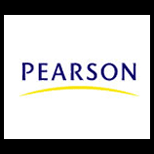
Concept explainers
Journalizing purchase and sale transactions, making dosing entries, preparing financial statements, and computing the gross profit percentage
This problem continues the Daniels Consulting situation from Problem P4-40 of Chapter 4. Daniels Consulting performs systems consulting. The company has also begun selling accounting software and uses the perpetual inventory system to account for software inventory. During January, Daniels Consulting completed the following transactions:
| Jan. 2 | Completed a consulting engagement and received cash of $5,700. |
| 2 | Prepaid three months office rent, $2.400. |
| 7 | Purchased 50 units software inventory on account, $1,050, plus freight in, $50. |
| 18 | Sold 40 software units on account, $2,625 (cost $880). |
| 19 | Consulted with a client for a fee of $2,500 on account. |
| 20 | Paid employee salaries, $1,885, which includes accrued salaries from December. |
| 21 | Paid on account, $1,100. |
| 22 | Purchased 185 units software inventory on account, $4,810. |
| 24 | Paid utilities, $375. |
| 28 | Sold 135 units software for cash, $5,265 (cost $3,470). |
| 31 | Recorded the following |
| a. Accrued salaries expense, $775 | |
| b. |
|
| c. Expiration of prepaid rent, $800 | |
| d. Physical count of software inventory, 50 units, $1,300 |
1. Open the following T-accounts in the ledger: Cash, $17,950;
2. Journalize and post the January transactions. Compute each account balance, and denote the balance as Bal.
3. Prepare the month ended January 31, 2017, income statement of Daniels Consulting. Use the multi-step format. List Service Revenue under gross profit and ignore classifying the expenses as selling and administrative.
4. Journalize and
5. Compute the gross profit percentage of Daniels Consulting.
Want to see the full answer?
Check out a sample textbook solution
Chapter 5 Solutions
ACC 201/202 MYACCLAB E-TEXT ONLY >I<
- A company has decided to purchase equipment, needing to borrow $100,000 from its local bank to make the purchase. The bank gives the company two options: (a) 60-month installment note with 4% interest or (b) 120-month installment note with 8% interest. Lenders often charge a higher interest rate for longer-term loans to compensate for additional risk of lending for a longer time period. Record $100,000 cash received from the issuance of the 120-month installment note with 8% interest.Record $100,000 cash received from the issuance of the 120-month installment note with 8% interest. Select the options to display a 120-month installment note with 12% interest. How much of the principal amount is due after the 60th payment?arrow_forward!??arrow_forwardaccounting questionarrow_forward
- Century 21 Accounting Multicolumn JournalAccountingISBN:9781337679503Author:GilbertsonPublisher:Cengage
 Accounting Information SystemsAccountingISBN:9781337619202Author:Hall, James A.Publisher:Cengage Learning,
Accounting Information SystemsAccountingISBN:9781337619202Author:Hall, James A.Publisher:Cengage Learning, - Principles of Accounting Volume 1AccountingISBN:9781947172685Author:OpenStaxPublisher:OpenStax College
 College Accounting (Book Only): A Career ApproachAccountingISBN:9781337280570Author:Scott, Cathy J.Publisher:South-Western College Pub
College Accounting (Book Only): A Career ApproachAccountingISBN:9781337280570Author:Scott, Cathy J.Publisher:South-Western College Pub Cornerstones of Financial AccountingAccountingISBN:9781337690881Author:Jay Rich, Jeff JonesPublisher:Cengage Learning
Cornerstones of Financial AccountingAccountingISBN:9781337690881Author:Jay Rich, Jeff JonesPublisher:Cengage Learning





